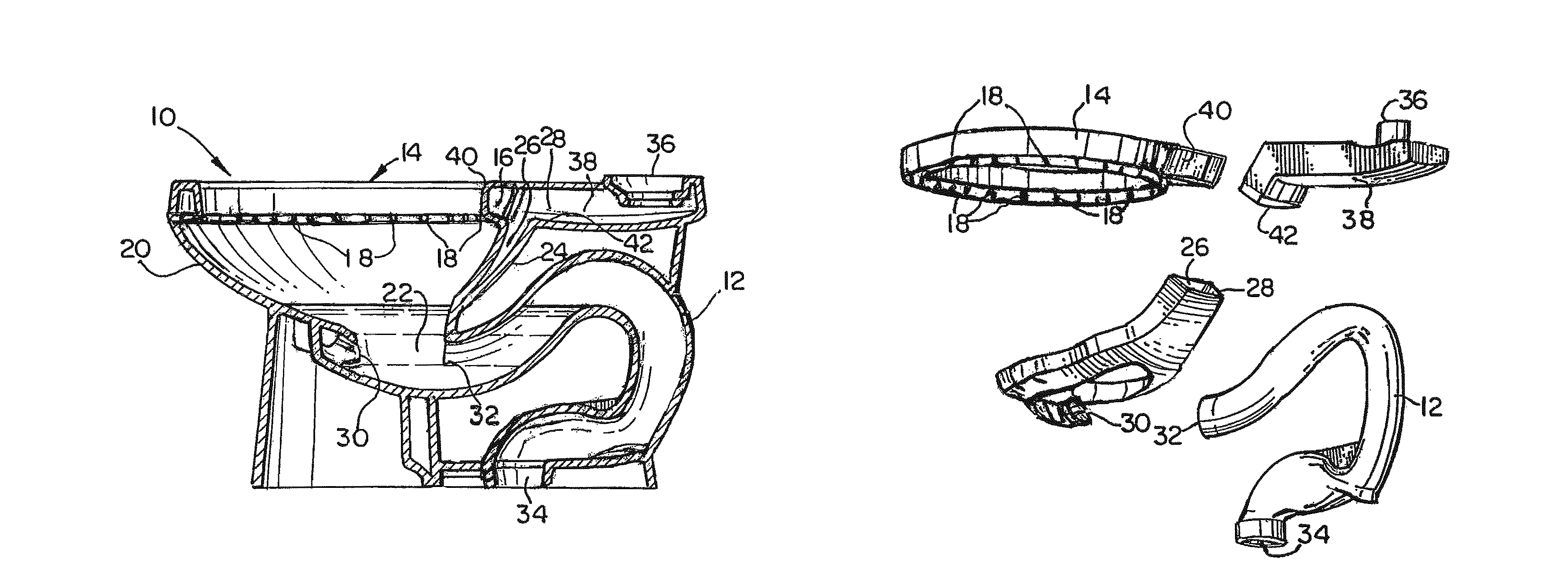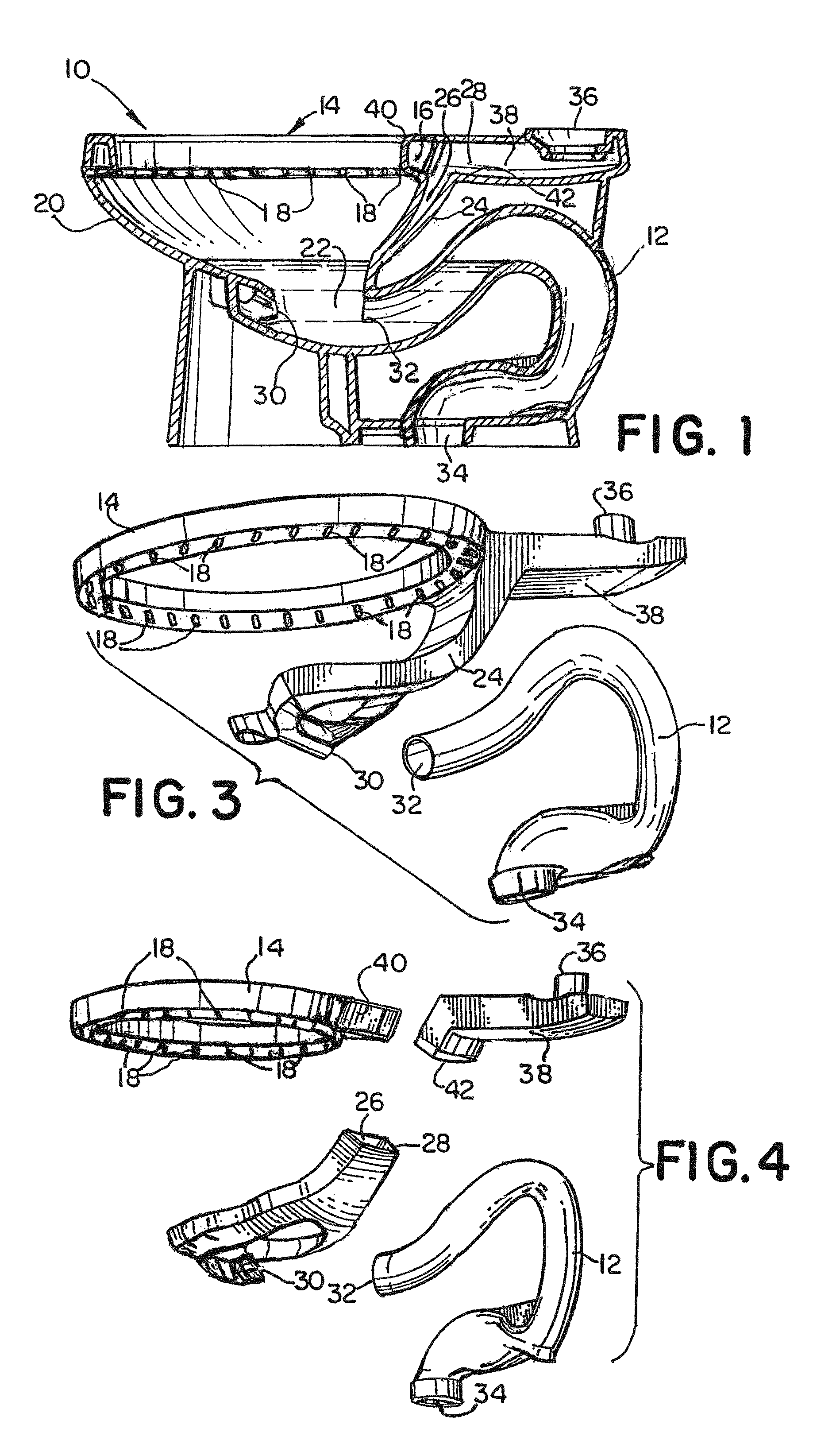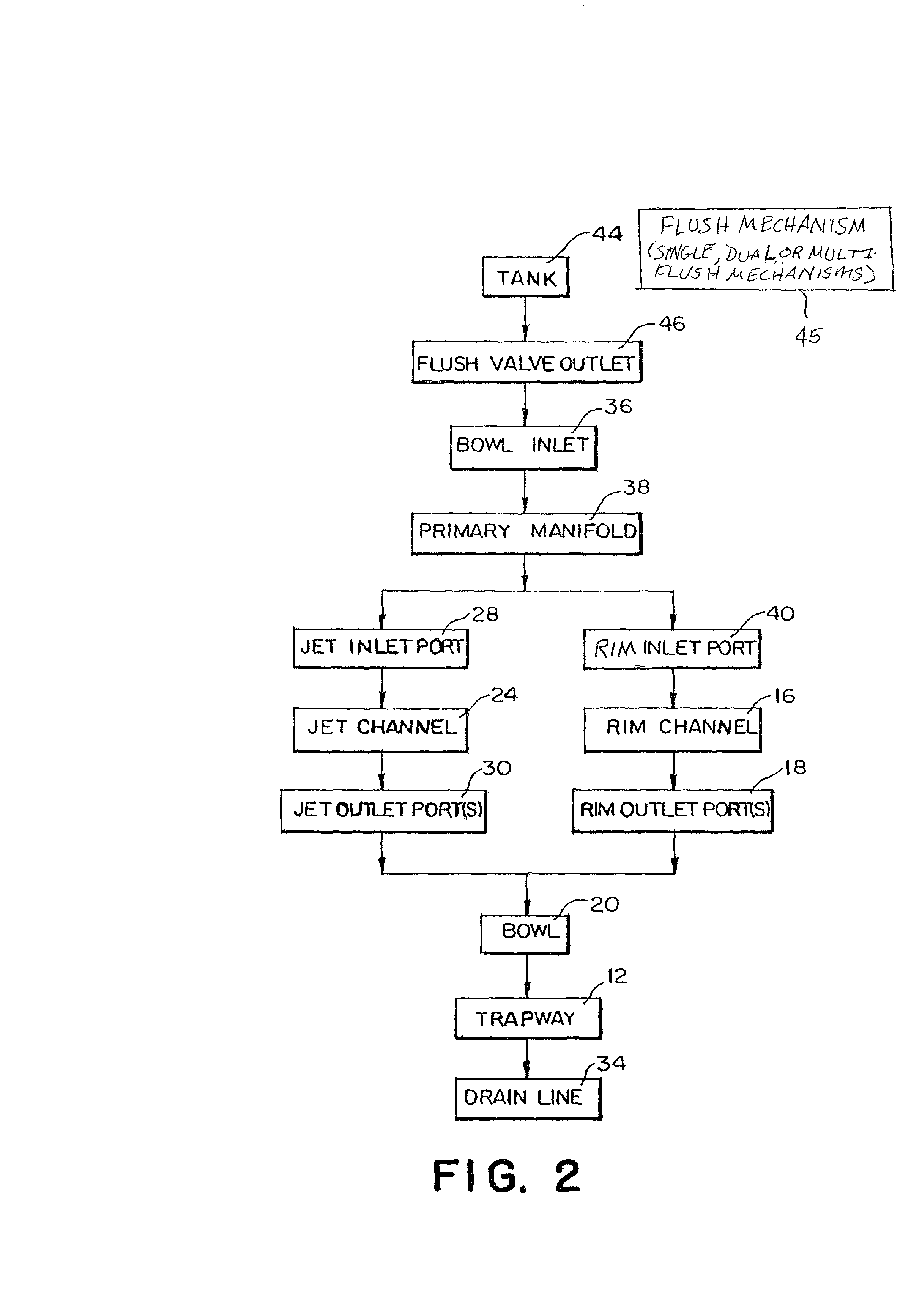High performance toilet capable of operation at reduced flush volumes
a toilet and flushing volume technology, applied in the field of gravity-powered toilets, can solve the problems of poor performance in bulk removal, high water level, and manual cleaning of the toilet bowl, and achieve the effect of reducing the flushing volum
- Summary
- Abstract
- Description
- Claims
- Application Information
AI Technical Summary
Benefits of technology
Problems solved by technology
Method used
Image
Examples
example 1
Comparative
[0101]A commercially available, 1.6 gallon per flush toilet with symmetrical, dual direct-fed jets was subjected to geometrical and performance analyses. The toilet is representative of many direct-fed jet toilets commercially available, in that the performance with respect to bulk removal is very good, scoring over 1,000 g on the MaP test (Veritec®Consulting Inc., MaP 13th Edition November '08, Mississauga, ON, Canada), but the minimal water directed to the rim for bowl cleansing is not pressurized. FIG. 11 shows a plot of the pressure recorded in the rim during the flush cycle. No sustained pressure was observed, only small spikes due to dynamic fluctuations. The integral of pressure-time curve was 0.19 in H2O.s, indicating a nearly complete lack of pressurization.
[0102]In Table 2, the reason for the lack of rim pressurization is evident. The toilet fails to meet the criteria specified in this invention, most notably in that the rim outlet port area is actually greater ...
example 2
Comparative
[0104]A commercially available, 1.6 gallon per flush toilet with a single direct-fed jet was subjected to geometrical and performance analyses. The toilet is representative of many direct-fed jet toilets commercially available, in that the performance with respect to bulk removal is very good, scoring over 1,000 g on the MaP test (Veritec Consulting Inc., MaP 13th Edition November '08, Mississauga, ON, Canada), but the minimal water directed to the rim for bowl cleansing is not pressurized. FIG. 12 shows a plot of the pressure recorded in the rim during the flush cycle. No sustained pressure was observed, only a very week signal above the baseline due to dynamic fluctuations. The integral of pressure-time curve was 0.13 in. H2O.s, indicating a nearly complete lack of pressurization.
[0105]In Table 2, the reason for the lack of rim pressurization is evident. The toilet fails to meet the criteria specified in this invention. The rim inlet port area is less that 2 times the r...
example 3
Comparative
[0107]A commercially available, 1.6 gallon per flush toilet with symmetrical, dual direct-fed jets was subjected to geometrical and performance analyses. The toilet is representative of many direct-fed jet toilets commercially available, in that the performance with respect to bulk removal is very good, scoring over 1,000 g on the MaP test (Veritec Consulting Inc., MaP 13th Edition November '08, Mississauga, ON, Canada), but the minimal water directed to the rim for bowl cleansing is not well pressurized. FIG. 13 shows a plot of the pressure recorded in the rim during the flush cycle. A weak, erratic signal was detected, but the maximum pressure sustained for at least one second was only 0.2 inches of H2O. The integral of pressure-time curve was 1.58 in. H2O.s, indicating minimal and ineffective pressurization.
[0108]In Table 2, the reason for the lack of rim pressurization is evident. The rim inlet port area is less that 2 times the rim outlet port area.
[0109]The toilet s...
PUM
 Login to View More
Login to View More Abstract
Description
Claims
Application Information
 Login to View More
Login to View More - R&D
- Intellectual Property
- Life Sciences
- Materials
- Tech Scout
- Unparalleled Data Quality
- Higher Quality Content
- 60% Fewer Hallucinations
Browse by: Latest US Patents, China's latest patents, Technical Efficacy Thesaurus, Application Domain, Technology Topic, Popular Technical Reports.
© 2025 PatSnap. All rights reserved.Legal|Privacy policy|Modern Slavery Act Transparency Statement|Sitemap|About US| Contact US: help@patsnap.com



